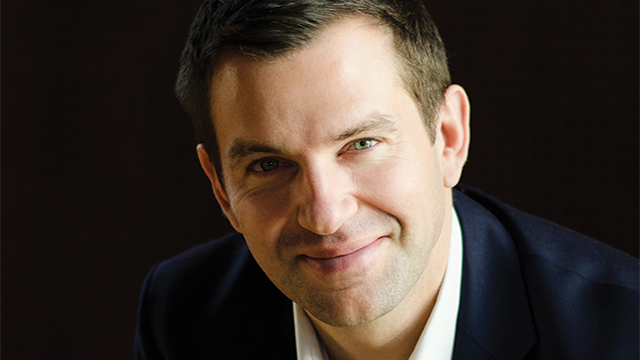Judges at the High Court and Court of Appeal misinterpreted the laws of privacy and used principles that could lead to “unjust outcomes”, lawyers acting for a group of residents living adjacent to the Tate Gallery told the Supreme Court today.
The case, Fearne and others v the Board of Trustees of the Tate Gallery, is one of the most high-profile breach of privacy claims to hit the Supreme Court in recent years.
The residents of the multimillion-pound apartments, at Neo Bankside on Holland Street SE1, are claiming the Tate’s viewing platform is a “nuisance” to them because it enables gallery visitors to look directly into their floor-to-ceiling windows, turning their homes into a “public exhibit”.
So far, they have had little luck in the courts. In February 2019, High Court judge Mr Justice Mann rejected their claim, ruling that, by living in homes with floor-to-ceiling windows, residents had created a “self-induced incentive to gaze”. He suggested residents install net curtains.
The residents appealed, and in February 2020 they lost again. The Court of Appeal found that overlooking does not fall within the tort of nuisance.
“Over the hundreds of years that the tort of nuisance has existed, there has never been a reported case in this country which has found that overlooking by a neighbour constituted a nuisance,” said then Master of the Roll Sir Terence Etherton when giving judgment.
However, at today’s hearing, Tom Weekes QC, representing the residents, challenged these criticisms, saying the principles the judges rely on don’t exist.
“There is virtually no support in the authorities for the view that an activity causing visual intrusion cannot be a nuisance.”
He said the Court of Appeal’s interpretation was “surprising” as the tort of nuisance is flexible.
“Whether a landowner’s activity is a nuisance turns simply on whether the activity seriously harms the amenity of his or her neighbour’s land,” he said.
“The nature of the activity, and the reason why the activity harms the amenity of the neighbour’s land are immaterial. So all kinds of activities can be a nuisance.”
Quoting case law from the UK and Commonwealth going back as far as the 14th century, Weekes argued that visual intrusion can be a nuisance and is not an exempt category.
“There is not a single case… where the outcome required visual intrusion to be exempt from the usual tests,” he said.
The fact that it might be lawful to build a window, or viewing platform, doesn’t mean it cannot be a nuisance, he said, as that would be like saying “because it is lawful to erect a chimney, smoke can never be a nuisance.”
In this case, the viewing gallery has a “terrible impact on the use and occupation of the flats,” he said.
“It is just obvious that nobody should be subjected to watching, accompanied with photography and filming, by more than half a million people a year.”
As for the suggestion made in the High Court that the large windows of the building invited gazes, “the learned judge invented a principle that a claimant cannot complain about the harm to the amenity of his property caused by an activity to the extent that the harm arises from a feature of his property that he has, in some sense, chosen.”
“Such a principle would produce obviously unjust outcomes.”
“If a factory emits toxic dust on to the audiences of a neighbouring open-air theatre, it should not be a defence to a nuisance claim to say the the developer/owner of the theatre built/bought an an open-air theatre despite an enclosed theatre being ‘quite adequate’.”
Although the residents have so far lost two judgements, legal experts are divided about the likely outcome of this hearing.
“When you get as far as the Supreme Court, guessing the outcome is a tricky business,” said James Souter, a partner at Charles Russell Speechlys.
“The neighbouring flat owners are 2-0 down, having lost in both the High Court and the Court of Appeal last February. However, the decisions were reached for very different reasons, and my view is there is a good chance the Supreme Court will agree that an invasion of privacy by overlooking can amount to a legal nuisance.”
“If it does, then the flat owners should be home and dry, given the unprecedented level of overlooking in this case,” he said.
The viewing platform, part of an extension to Tate Modern named the Blavatnik Building, has been open to the public since June 2016. The walkway on the 10th floor offers panoramic views of London, but also allows people to stare into the adjacent Neo Bankside flats.
The residents say that, from a significant part of the viewing platform, there is “little to view apart from Neo Bankside”, which means visitors inevitably have their eyes drawn to their luxury homes.
According to their written particulars of claim, “when the viewing platform is open to the public, a near constant stream of visitors subject the claimants’ flats (and other flats in Neo Bankside) to prolonged and a high degree of visual scrutiny”.
This, they argued, includes use of binoculars or phones or cameras with zoom lenses, with resulting photographs or films posted on social media sites.
They claim they and their families are subjected to near-constant “surveillance” when they are in their flats, turning them into “something akin to a public exhibit”, and are seeking a court order restricting use of the viewing platform.
The case is scheduled to last for two days, with lawyers for the Tate Gallery presenting their arguments later in the hearing.







